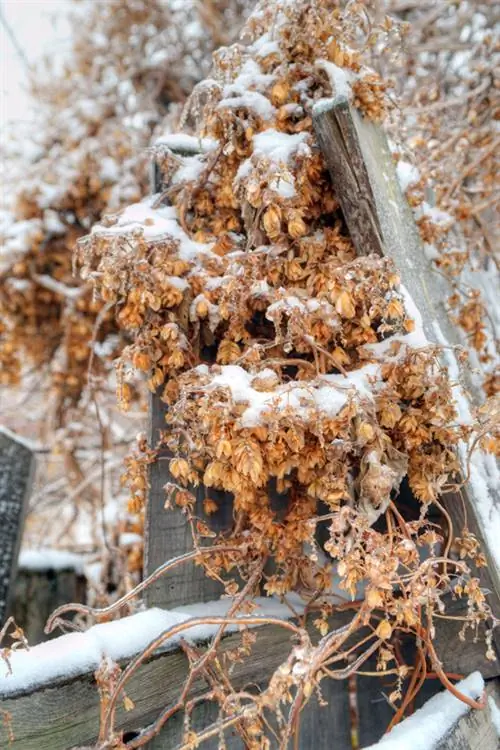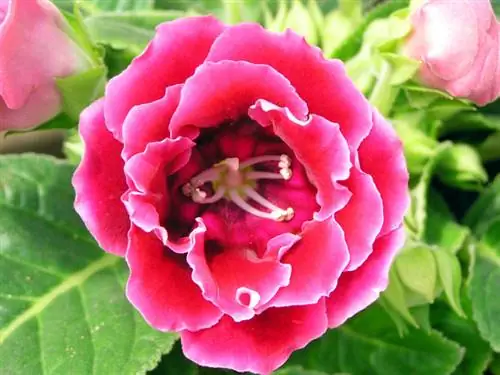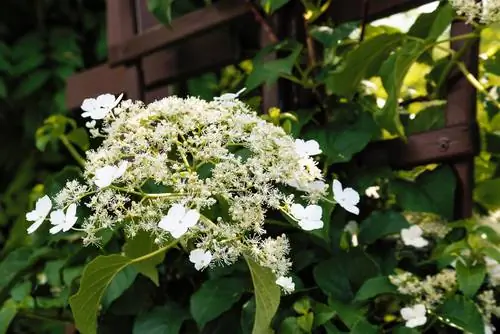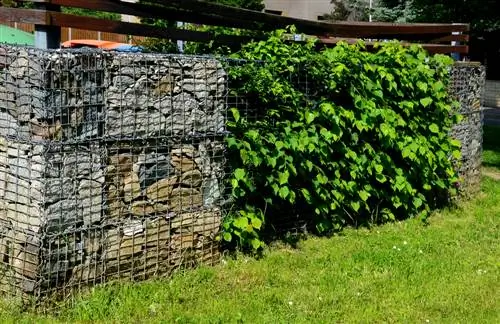- Author admin [email protected].
- Public 2023-12-16 16:46.
- Last modified 2025-01-23 11:20.
The climbing hydrangea, a climbing shrub originally from Japan and Korea, is often used to add greenery to walls, older (even dead) trees or courtyards. The plant can climb up to ten meters high and tolerates both shady and sunny locations as long as it doesn't get too warm there. The slow-growing climbing hydrangea is considered hardy.
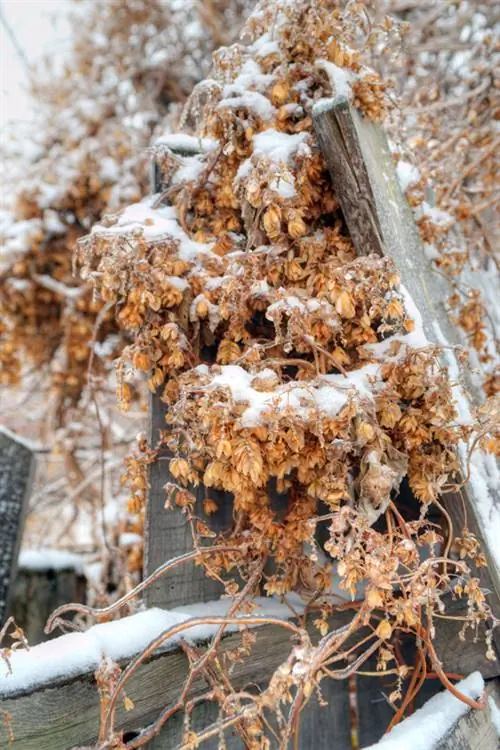
Is the climbing hydrangea hardy and how do I protect it in winter?
The climbing hydrangea is hardy and can tolerate double-digit temperatures below zero. Protect the root area from frost by mulching and young plants or potted plants with covers such as jute bags or raffia mats.
Climbing hydrangeas are hardy
Meanwhile, in addition to the autumn foliage-coloring climbing hydrangeas, there are new varieties that retain their leaves over the winter. However, summer-green climbing hydrangeas are much more magnificent, as they turn their otherwise dark green foliage bright golden yellow in autumn. In winter, the framework, which becomes gnarled with age, offers a pretty sight with its dark, reddish-brown shoots. The climbing hydrangea is also very hardy even in our latitudes. Even double-digit temperatures below zero don't bother her. Only the root area should be protected from frosty temperatures with a thick layer of mulch.
Beware of spring frosts
The climbing hydrangea blooms on the annual shoots, so there is no need to fear that the flowers will fail due to late spring frosts. However, young shoots are at risk, especially in southern locations, because the intense sunlight can cause the plant to sprout too early, and the young shoots can freeze due to the large temperature differences between day and night. In this case, winter protection makes sense.
Covering young climbing hydrangeas in winter
However, young, freshly planted climbing hydrangeas in their first two years as well as specimens that are cultivated in a bucket must be protected in winter. However, frost-free wintering in the house or basement is not necessary. Mulch the root area thickly with leaves, brushwood, straw or bark mulch. Protect the climbing shoots with the help of a jute sack (€15.00 on Amazon) placed over them (for free-standing climbing hydrangeas with a trellis or similar).etc.) or cover the tendrils with raffia mats.
Tips & Tricks
Make sure that the plant does not die of thirst in winter, which particularly affects specimens kept in pots. Although watering has to be done much less frequently in winter, the soil must not dry out. However, watering is only carried out when the ground is frost-free.

